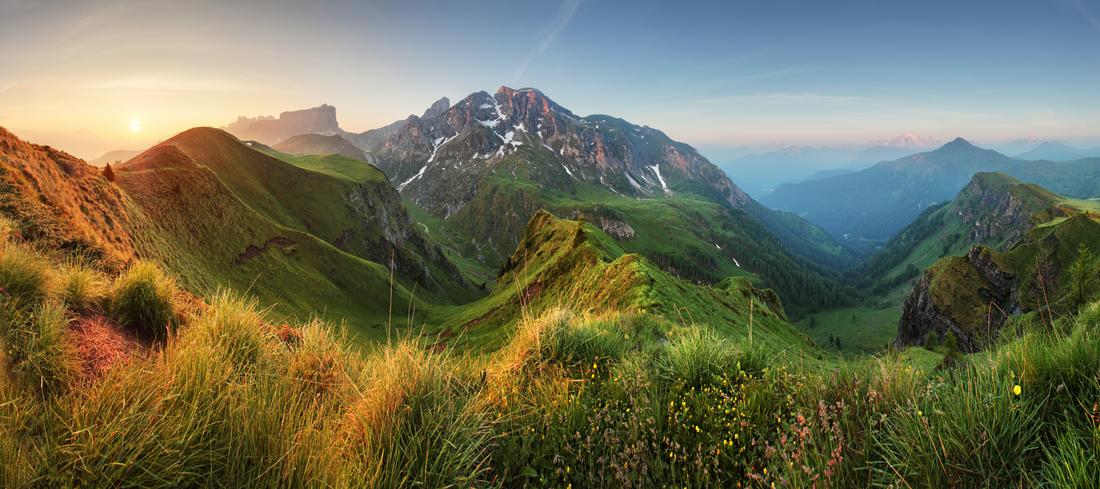
Dolomites | World Heritage
The main attraction of the province of Belluno, especially if we consider its northernmost area, is undoubtedly the Dolomite landscape.
The Dolomites, universally recognized as the most beautiful mountains in the world, were included in the World Natural Heritage List by UNESCO – the United Nations Educational, Scientific and Cultural Organization – on 26 June 2009.
The Dolomite region was granted entry into the UNESCO World Heritage List thanks to two different yet closely linked criteria: the beauty of the landscape and the scientific importance of the geological and geomorphological characteristics that give life to these rock cathedrals.
Being a World Heritage Site today involves a dual function: on the one hand, the valorization and promotion of the Dolomites from a tourist, cultural and scientific point of view, and on the other, their protection and preservation for future generations.
No longer the “property” of a single state, region, province or municipality, but the wealth of the entire human race and therefore to be left as a legacy to those who come after us.
In the entire area of the Eastern Alps that are commonly called the Dolomites, only 9 systems – groups of peaks and mountain groups that are homogeneous in terms of landscape, geological and geomorphological characteristics – have been identified for inclusion in the list drawn up by UNESCO.
These systems extend from west to east, from the Brenta Dolomites in Trentino to the Friulian and Oltre Piave Dolomites on the border between Veneto and Friuli Venezia Giulia, passing through some of the most famous and celebrated peaks of world mountaineering and landscapes of extraordinary beauty shared between the provinces of Trento, Bolzano, Udine, Pordenone and of course Belluno. 
And the province of Belluno is the one that can boast the majority of the Dolomites in general and of the UNESCO systems, being affected by five out of nine.
Pelmo and Croda da Lago, Marmolada, Pale di San Martino, Pale di San Lucano, Dolomiti Bellunesi and Vette Feltrine - a system within which some of the most beautiful peaks of all the Dolomites are found, such as Agner and Civetta - Northern Dolomites - which include, among others, Lagazuoi, Cristallo, Tofane, Antelao, Tre Cime di Lavaredo - and a short stretch of the Friulian and Oltre Piave Dolomites are a landscape and scientific wealth that the whole world envies.
Furthermore, to crown the important role that the province of Belluno plays in this particular context, Cortina d'Ampezzo - not by chance called Queen of the Dolomites - was also chosen as the operational headquarters of the Fondazione Dolomiti Dolomiten Dolomites Dolomitis UNESCO, which has its offices in the beautiful ancient building of the Comun Vecio, overlooking Corso Italia in the heart of Cortina. 
In the “Declaration of Outstanding Universal Value” drawn up by UNESCO, we read in this regard: “The Dolomites are widely regarded as among the most beautiful mountain landscapes in the world. Their intrinsic beauty derives from a variety of spectacular vertical features – such as pinnacles, spires and towers – which contrast with horizontal surfaces – such as ledges, crags and plateaus – and which rise abruptly from extensive detrital deposits and gentle, undulating reliefs. […] The characteristic scenery of the Dolomites has become the archetype of the “Dolomite landscape”. The pioneers of geology were the first to be captivated by the beauty of these mountains: their writings, and subsequent paintings and photographs, further highlight the extraordinary aesthetic appeal of the entire property.”
